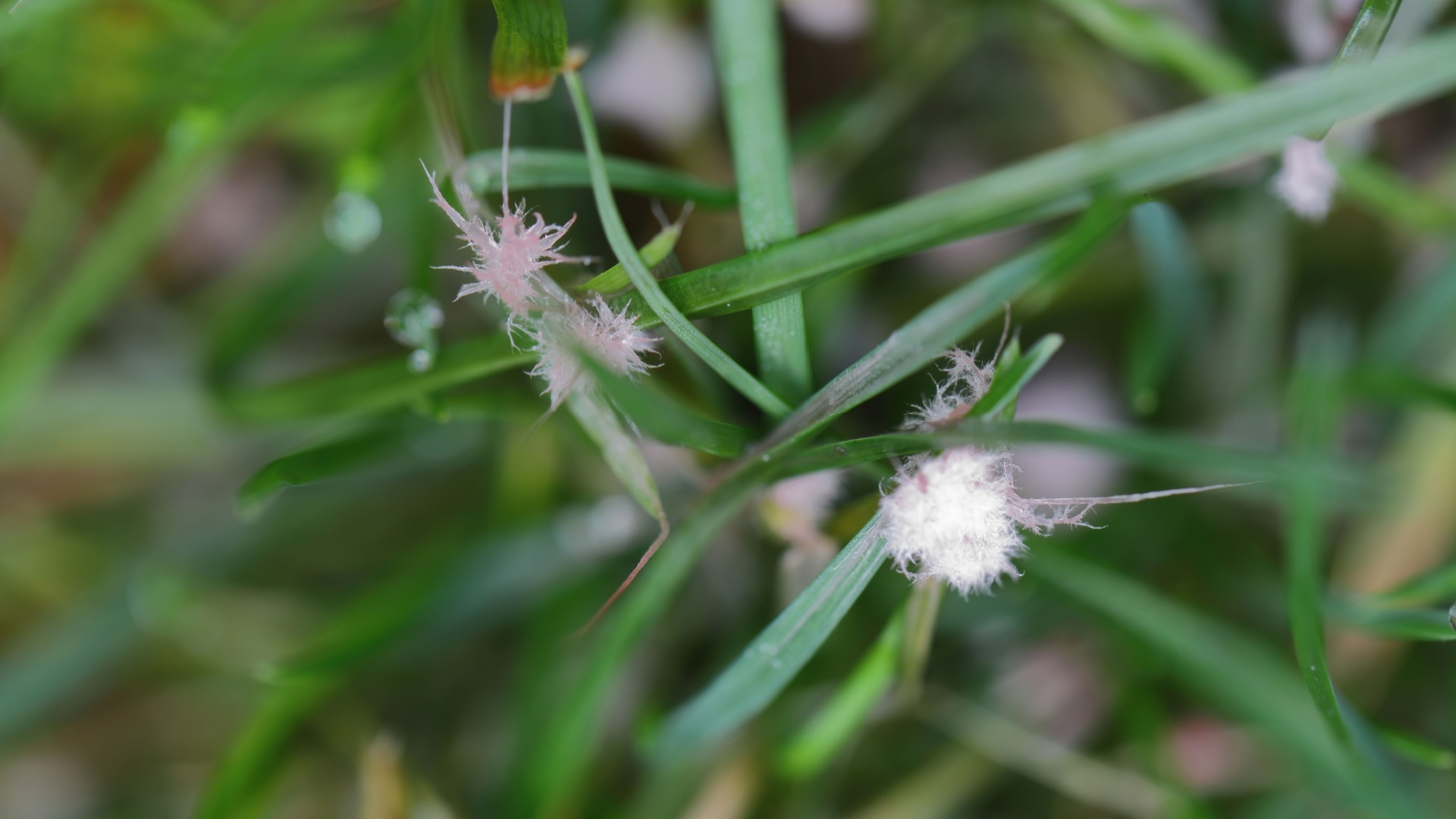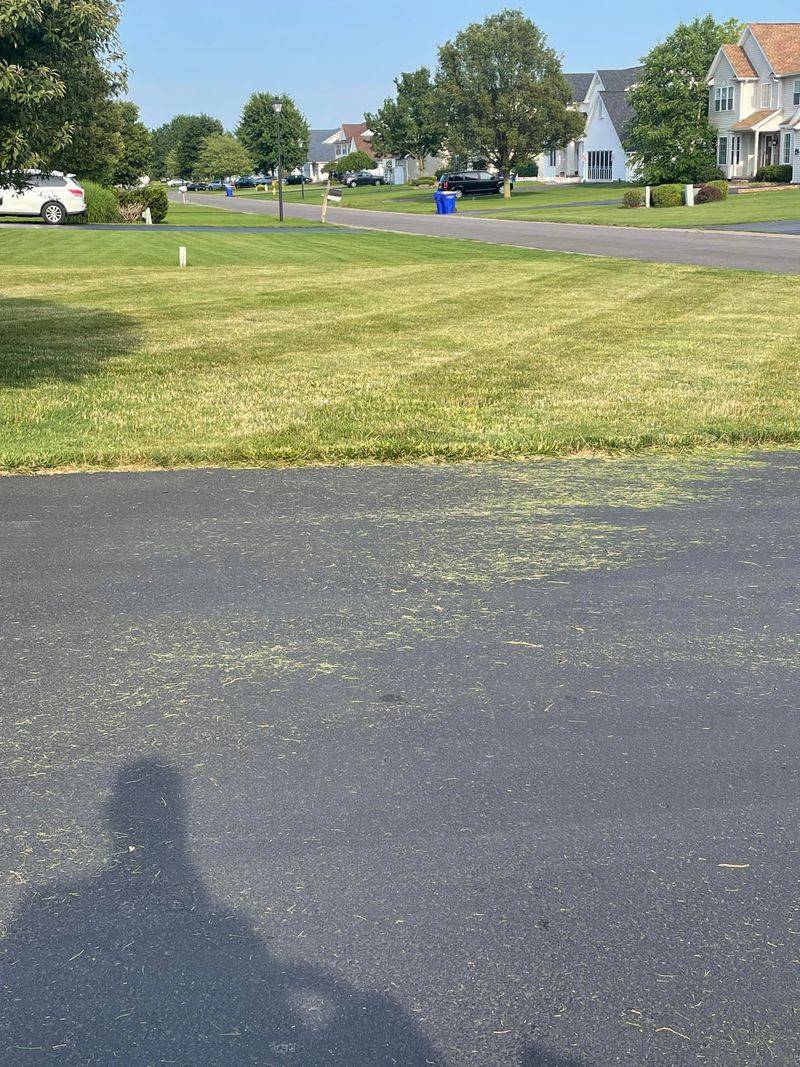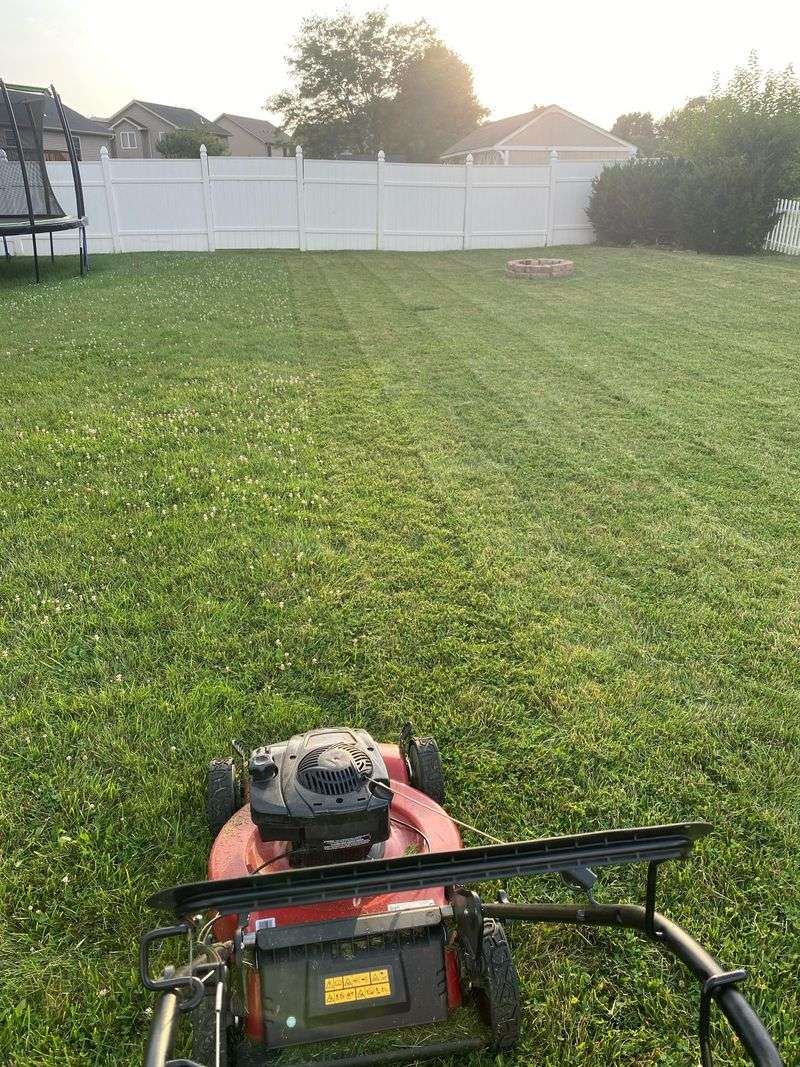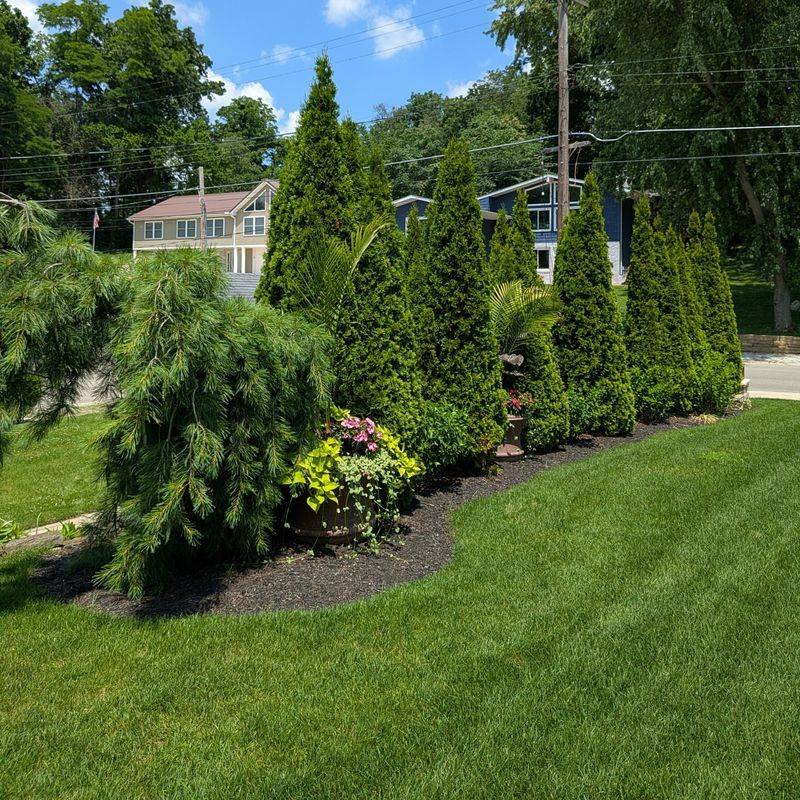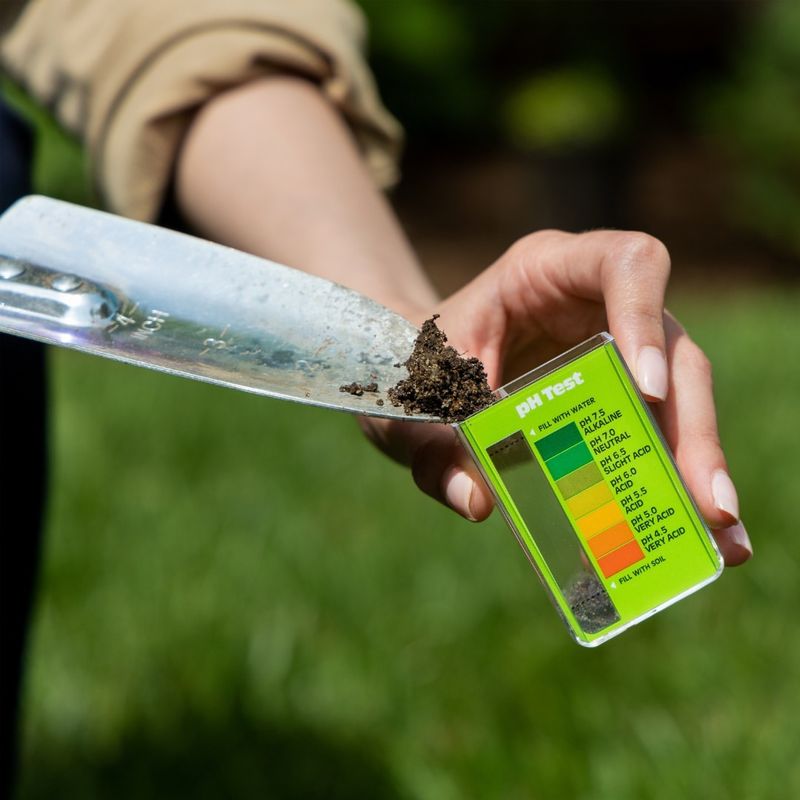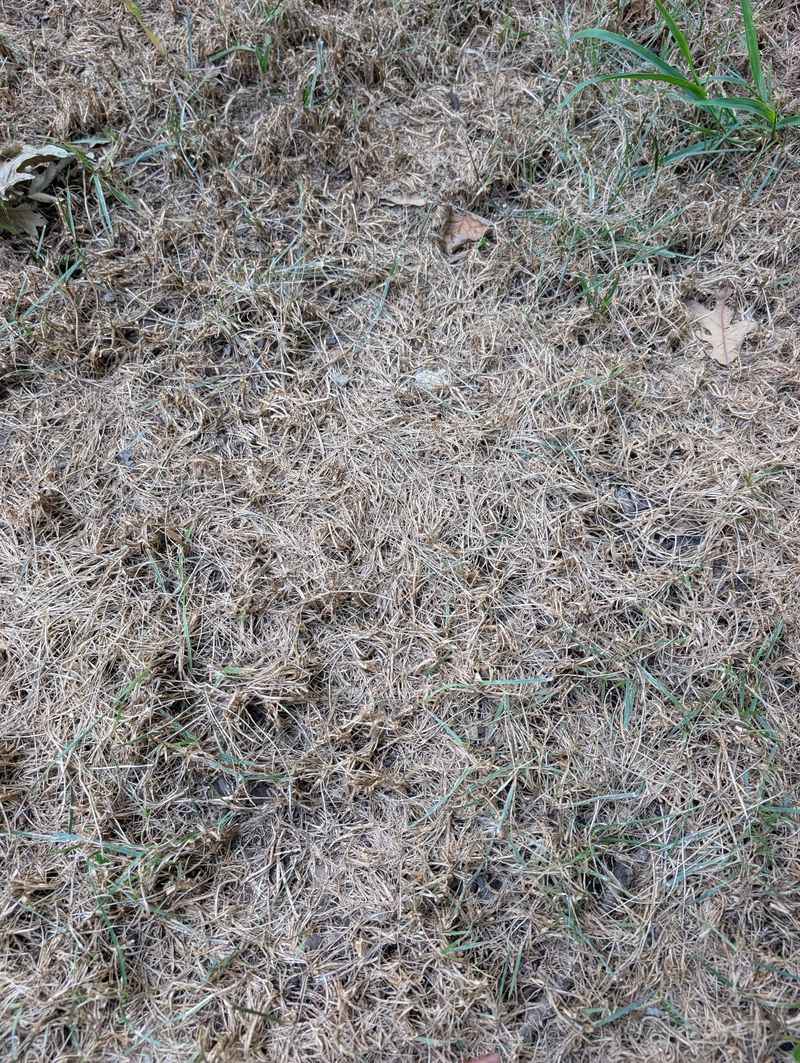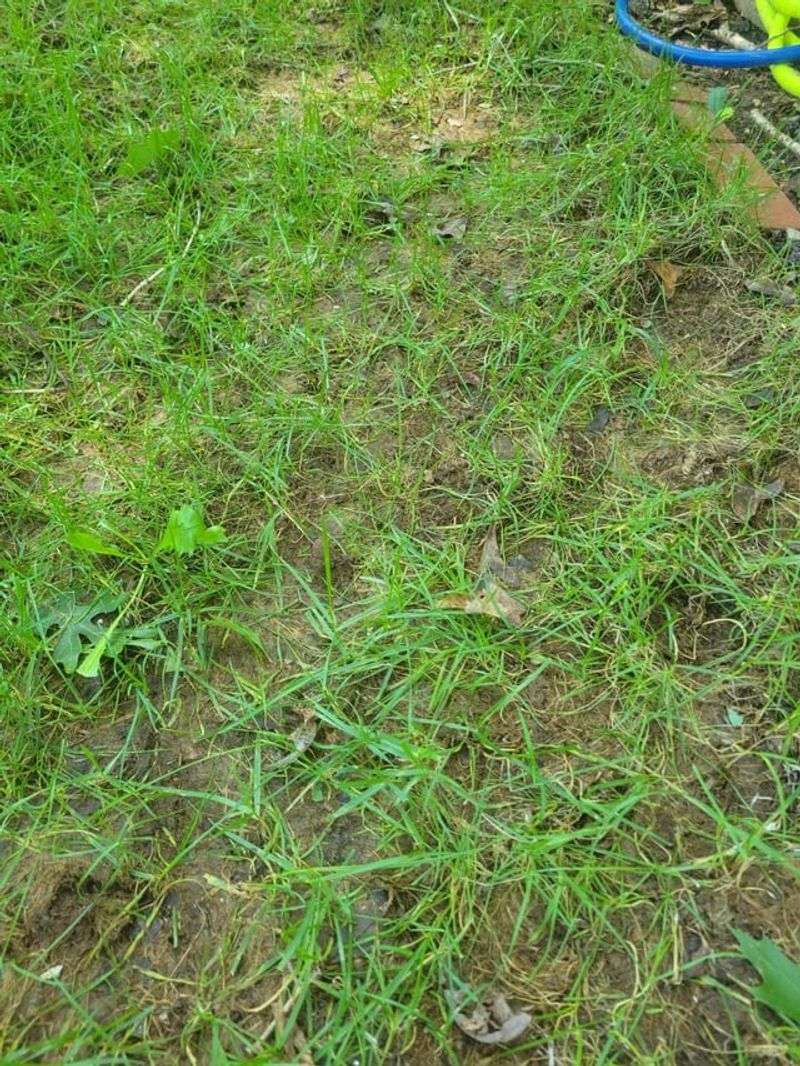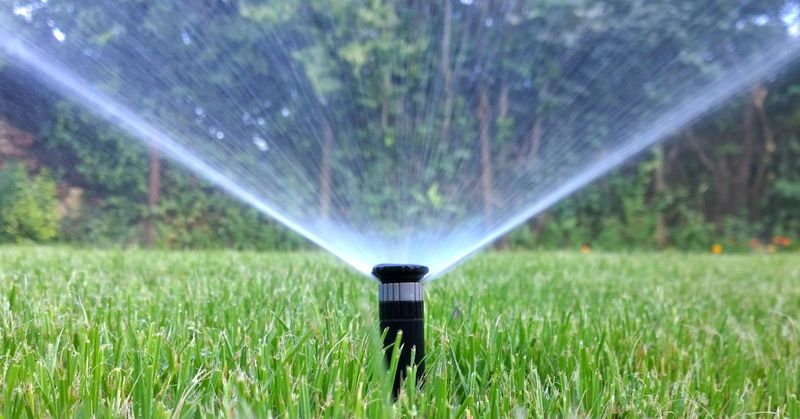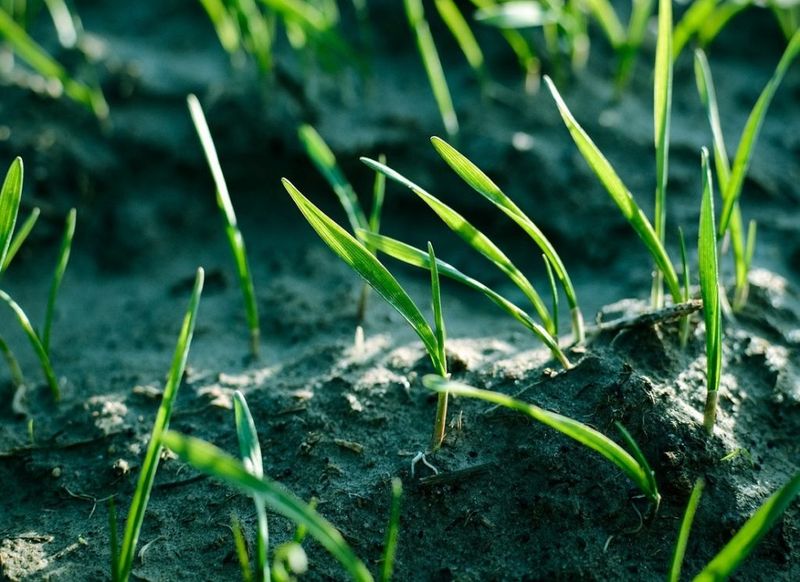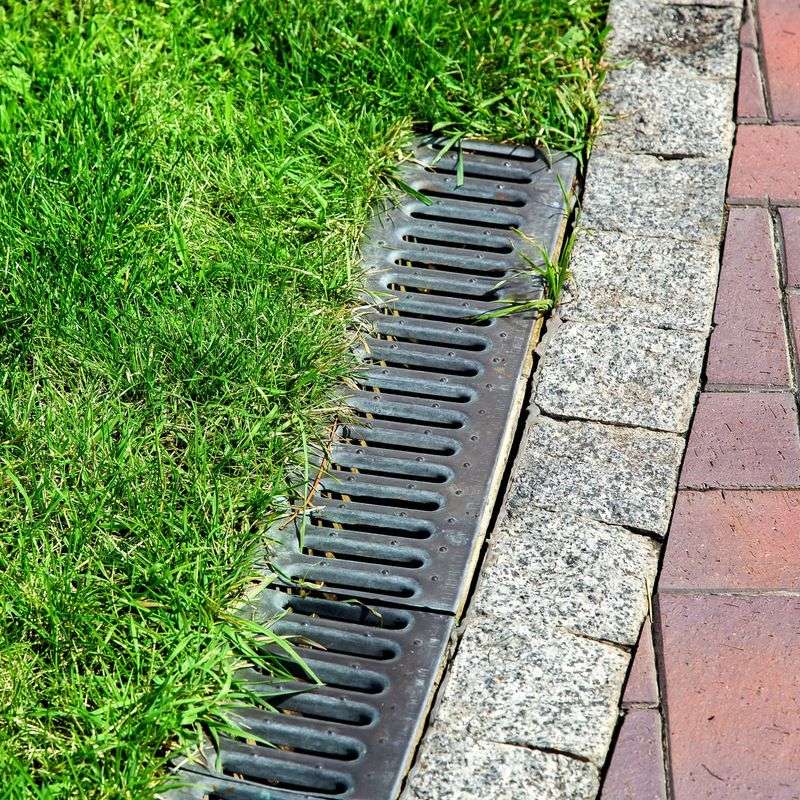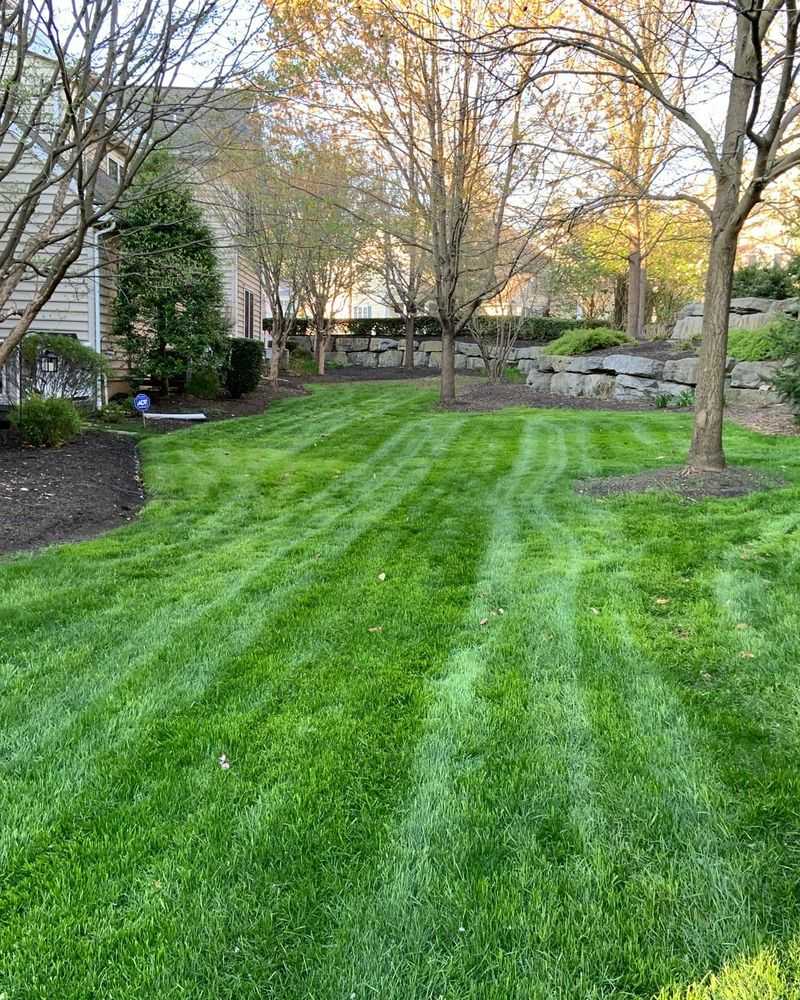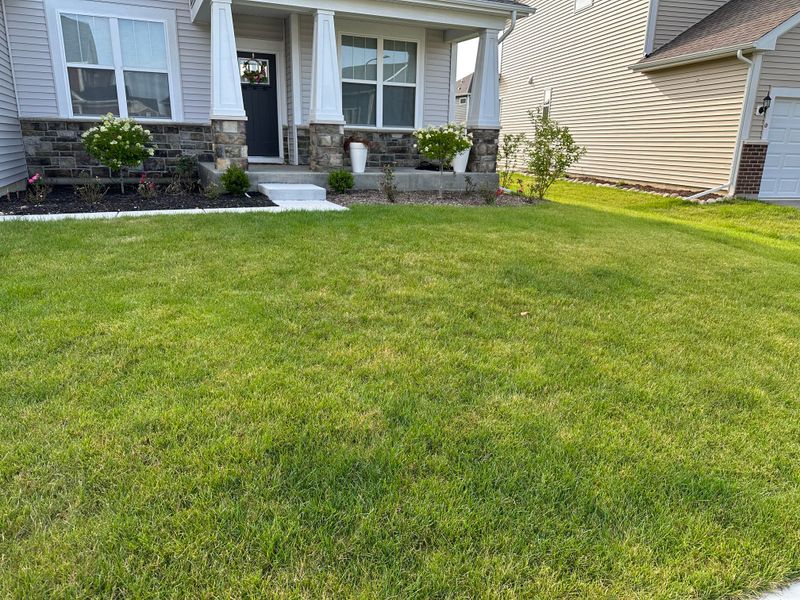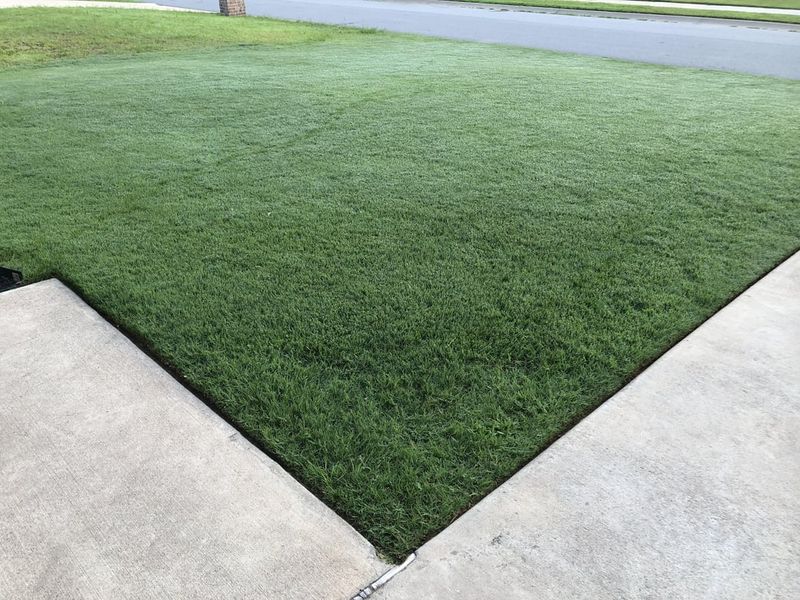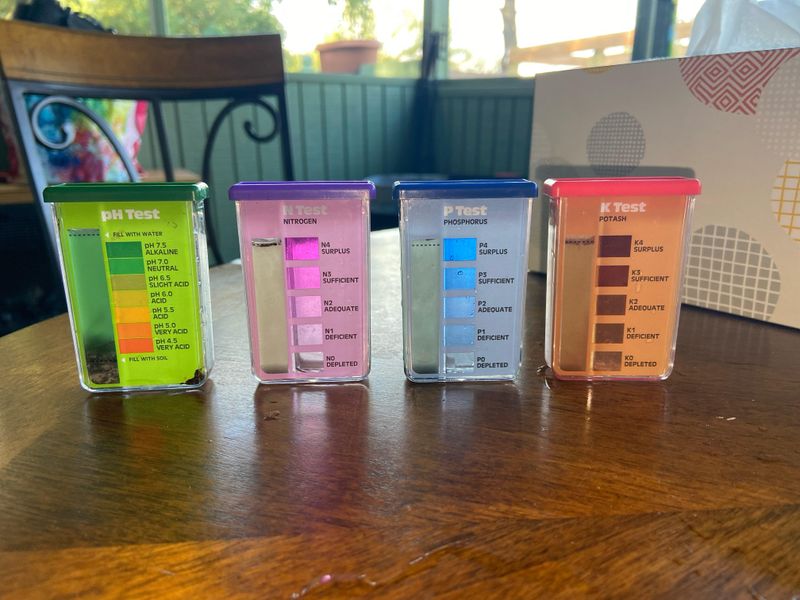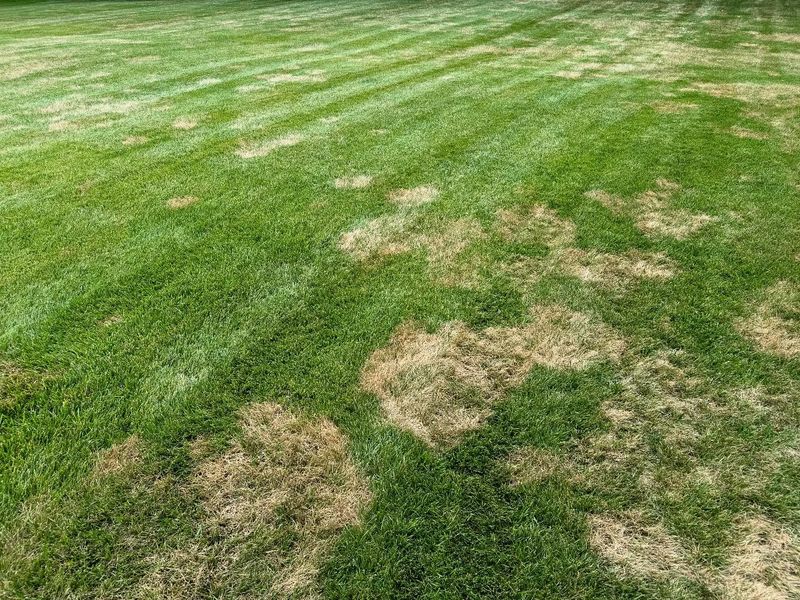When your lush Ohio lawn starts sporting pinkish patches and stringy red threads, it’s more than just an eyesore—it’s a cry for help. Red thread disease may look alarming, but with the right care, it’s no match for a well-prepped yard.
From beefing up your soil to smart mowing moves, these proven fixes will help you kick red thread to the curb and bring back that green, carpet-like glory your lawn deserves.
1. Boost Nitrogen Levels
Your lawn craves nitrogen when fighting red thread disease. A proper feeding with a nitrogen-rich fertilizer strengthens grass blades and helps them resist the fungal invasion.
Apply 0.5 to 1 pound of nitrogen per 1,000 square feet of lawn area. Fall applications work especially well for long-term recovery, while spring treatments provide immediate support during active growth periods.
2. Maintain Proper Mowing Height
Keeping your grass at the right height creates a stronger lawn that fights off diseases naturally. For most Ohio lawns, aim for 3-4 inches tall during the growing season.
Never remove more than one-third of the grass blade in a single mowing. Taller grass develops deeper roots and better access to soil nutrients, making it naturally more resistant to red thread fungus.
3. Improve Air Circulation
Red thread thrives in damp, stagnant conditions. Creating better airflow across your lawn helps grass dry faster after rain or morning dew.
Trim back overhanging branches and thin out dense shrubs around lawn edges. Consider core aeration to reduce soil compaction, allowing better air movement through the root zone. These simple steps significantly reduce humidity levels that feed fungal growth.
4. Balance Soil pH Levels
Red thread loves acidic soil conditions common in Ohio. Testing reveals your lawn’s exact pH needs – most grass types prefer a slightly acidic to neutral range (6.0-7.0).
Apply lime if your soil tests below 6.0 to gradually raise pH levels. For overly alkaline soils (rare in Ohio), sulfur products help lower pH. Correcting imbalances creates an environment where healthy grass thrives and disease struggles.
5. Apply Fungicides Strategically
When red thread gets out of control, fungicides offer a direct attack. Look for products containing azoxystrobin, propiconazole, or pyraclostrobin – all effective against this specific lawn disease.
Timing matters tremendously. Apply during cool, wet periods when red thread actively spreads (typically spring and fall in Ohio). Follow label directions precisely, as incorrect application wastes money and may damage beneficial soil organisms.
6. Reduce Thatch Buildup
That spongy layer between grass and soil creates the perfect hiding spot for red thread fungus. When thatch exceeds 1/2 inch thick, it’s time to take action.
Rent a power rake or dethatching machine from your local garden center. Spring and early fall work best for this task in Ohio. After dethatching, rake up and remove the debris rather than letting it decompose on your lawn.
7. Water Deeply But Infrequently
Moisture management makes a huge difference with red thread. Instead of daily light sprinkles, give your lawn 1-1.5 inches of water once or twice weekly.
Early morning watering (5-9am) allows grass blades to dry completely during daylight hours. This simple schedule change deprives the fungus of the prolonged moisture it needs to spread while still keeping your grass properly hydrated.
8. Overseed With Resistant Varieties
Some grass types naturally fight off red thread better than others. Perennial ryegrass and tall fescue varieties with enhanced disease resistance offer excellent options for Ohio lawns.
Fall overseeding gives new grass the best chance to establish before winter. Spread seed at recommended rates after core aeration for maximum soil contact. The resistant varieties gradually replace susceptible grasses, creating a naturally stronger lawn.
9. Correct Drainage Issues
Standing water creates a paradise for red thread fungus. Identifying and fixing low spots prevents water from pooling after rain.
Add topsoil to depression areas, ensuring proper slope away from buildings. For severe drainage problems, consider installing French drains or dry creek beds. Even small improvements in drainage significantly reduce the humid conditions that red thread requires.
10. Use Compost Top-Dressing
A thin layer of quality compost works wonders against red thread disease. Spread 1/4 to 1/2 inch of well-aged compost evenly across your lawn surface.
The beneficial microbes in compost actually compete with and suppress fungal pathogens. As a bonus, this natural approach gradually improves soil structure and adds slow-release nutrients. Apply in early spring or fall for best results in Ohio’s climate.
11. Reduce Shade Where Possible
Sunlight naturally suppresses fungal growth and helps grass recover from red thread damage. Look for ways to increase sun exposure on heavily shaded lawn areas.
Selectively prune tree branches that block morning sun, which is especially important for drying overnight moisture. For permanently shaded areas, consider shade-tolerant ground covers as lawn alternatives. Even a few more hours of daily sunlight significantly reduces disease pressure.
12. Add Potassium Fertilizer
While nitrogen gets most attention, potassium plays a crucial role in disease resistance. Apply a potassium-rich fertilizer (look for higher third number on the bag) to strengthen cell walls.
Fall applications work particularly well, preparing grass for winter stress. Aim for 1 pound of potassium per 1,000 square feet annually. Grass with adequate potassium levels develops stronger disease resistance throughout Ohio’s challenging seasons.
13. Manage Morning Dew
Those glistening water droplets might look pretty but provide perfect conditions for red thread spread. A simple morning routine can make a big difference during peak disease periods.
Drag a garden hose or long pole across dewy grass to knock moisture off blades, speeding drying time. For small problem areas, consider using a leaf blower on low setting. This five-minute task disrupts the moisture cycle red thread depends on.
14. Test For Nutrient Deficiencies
Red thread often signals specific soil nutrient problems beyond just nitrogen. A comprehensive soil test reveals exactly what your lawn lacks.
Ohio State University Extension offices provide affordable testing services with specific recommendations. Beyond the big three (NPK), micronutrients like iron and manganese play important roles in disease resistance. Correcting deficiencies based on actual test results provides targeted defense against red thread.
15. Implement Organic Treatments
Natural approaches can effectively supplement conventional red thread treatments. Neem oil, compost tea, and beneficial bacteria products all show promise against fungal lawn diseases.
Apply organic treatments during early disease stages for best results. Many work by boosting the lawn’s natural defense systems rather than directly killing the fungus. These gentler solutions prove especially valuable for households with children, pets, or environmental concerns.

